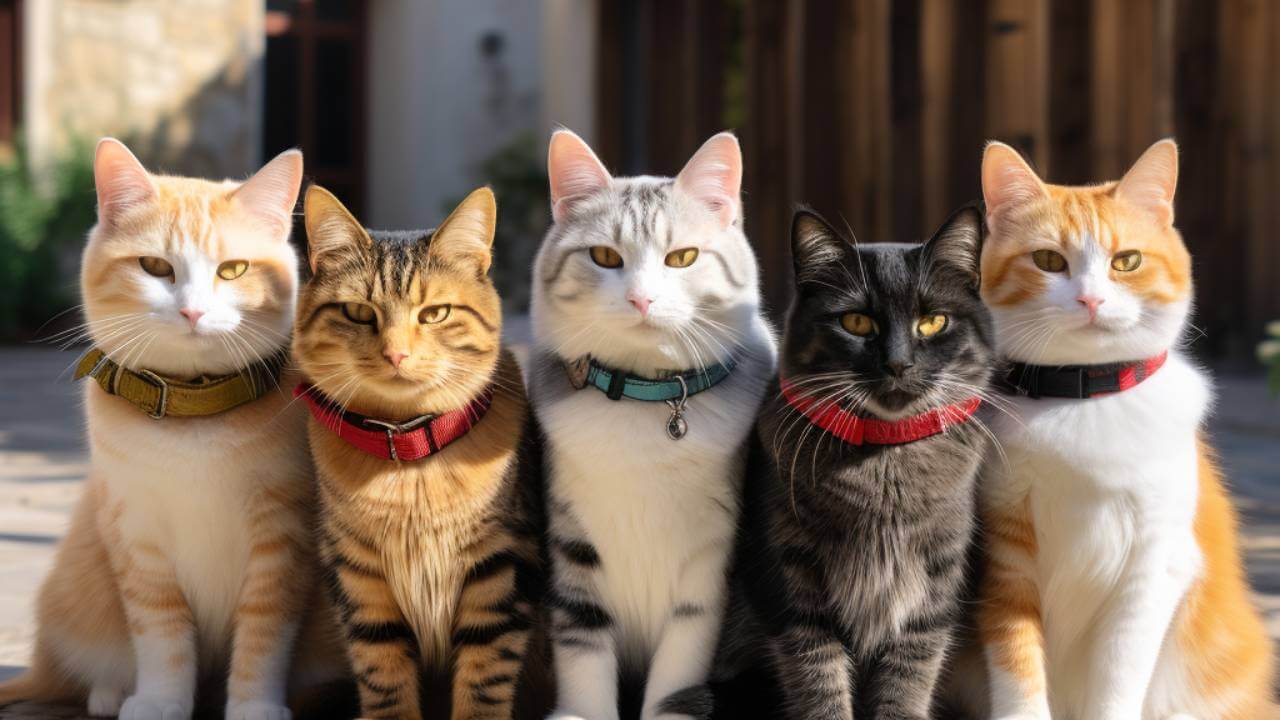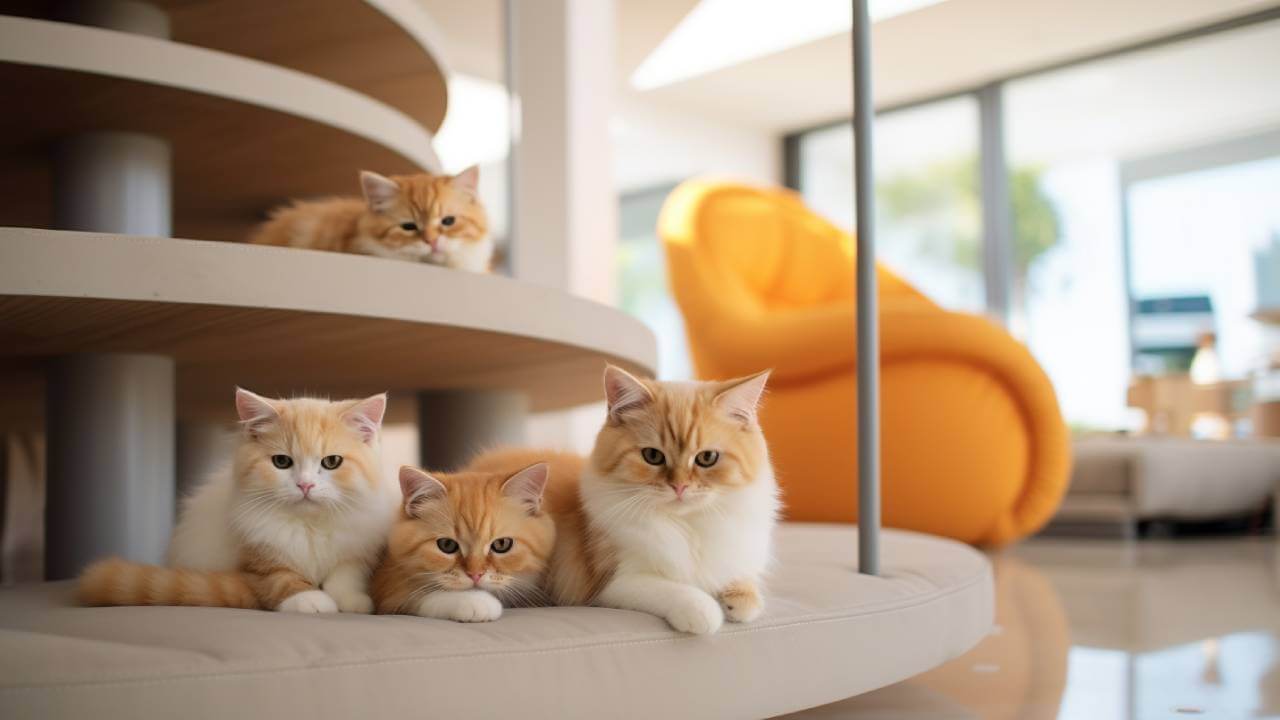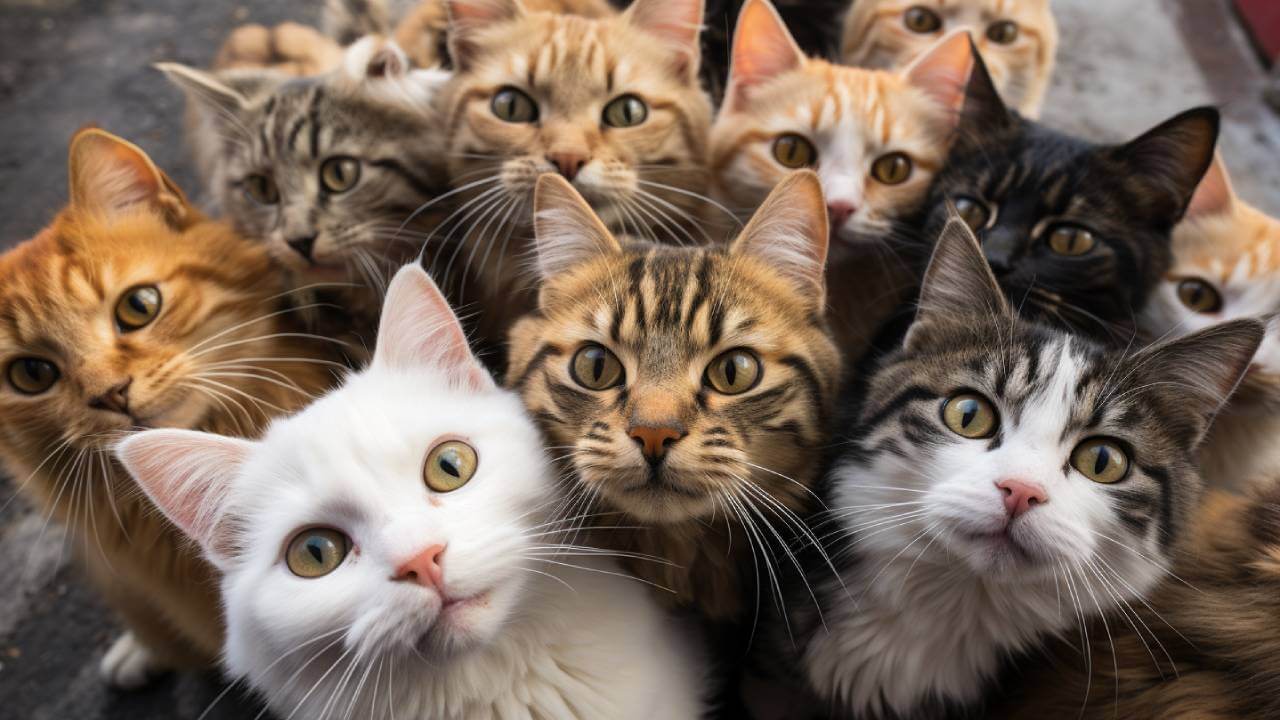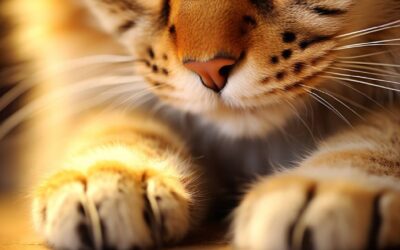Hello, cat lovers! It is common to find households filled with the soothing purrs and charming antics of multiple cats, but the critical question is, how many cats are too many?
This article will provide valuable insights to help you find the purr-fect balance and ensure that your home remains a sanctuary for you and your beloved cats. Let’s embark on this journey to discover how many cats are too many.
How Many Cats Are Too Many?
The ideal number of cats in a household varies based on available space, resources, and the individual’s ability to provide proper care. Two to four cats are generally manageable for most people, ensuring each cat receives adequate attention and care.
However, even one cat might be sufficient for some, while experienced caregivers in more spacious homes can responsibly care for five or more cats.
If you’re considering expanding your furry family, you might want to explore our kittens for sale for a potential new companion.
The Significance of Multiple Cat Care
Caring for multiple cats is a fulfilling and rewarding experience but comes with unique challenges. The significance of multiple cat care is crucial for maintaining a healthy and harmonious environment when owning more than one cat. Here are the key points:
- Enhanced social interaction 🐾 Cats can benefit from the companionship of their peers, helping to prevent loneliness and providing mutual entertainment and comfort.
- Increased enrichment 🌟 Multiple cats can stimulate each other through play and interaction, vital for their mental and physical health.
- Diligent health monitoring 🩺 With more cats, staying vigilant about health issues is crucial. Regular vet visits and observing any changes in behavior or appetite are essential. Covering your cats with cat insurance can help manage unexpected medical expenses, especially in a multi-cat household.
- Dietary management 🍽️ Feeding multiple cats requires careful planning to ensure each cat receives the right amount of food and nutrition according to their needs.
- Territorial management 🏡 Properly managing a multi-cat household involves ensuring enough resources, like litter boxes and scratching posts, to prevent territorial disputes.

Recognizing Cat Overcrowding Signs and Symptoms
Cat overcrowding is when the number of cats in a household exceeds the capacity to provide adequate care, attention, and resources. It can have severe consequences for both the cats and their human caregivers.
Recognizing the signs and symptoms of cat overcrowding is crucial to ensure the well-being of your feline companions and maintain a harmonious living environment.
1. Aggressive Behavior
Overcrowding can lead to heightened stress levels among cats, causing them to exhibit aggressive behavior towards each other. This can manifest as hissing, growling, swatting, or even full-blown fights.
2. Decreased Appetite
When cats feel stressed or overwhelmed, they may lose their appetite. If you notice one or more cats in your household refusing to eat or losing weight, it could be a sign of overcrowding.
3. Excessive Grooming or Overgrooming
Cats often groom themselves as a stress-coping mechanism. Some cats may exhibit excessive grooming in overcrowded situations, leading to skin problems and hair loss.
4. Hiding or Isolation
Cats may become more reclusive or hide away in overcrowded environments. This is a clear indication of discomfort and anxiety.
5. Inadequate Self-Care
With too many cats to care for, some may need more attention and grooming. Neglected cats may develop matted fur, dirty coats, and health issues.
6. Vocalization
Increased meowing, yowling, or other vocalizations can indicate stress in overcrowded conditions. Cats may use vocalization as a means to express their discomfort.

Health Issues in Multi-Cat Households
Owning multiple cats can be a rewarding experience, but it also comes with challenges, particularly concerning the health and well-being of your feline companions.
In Multi-cat home care, awareness of various health issues is crucial to providing the best care for your beloved pets.
1. Stress and Behavioral Problems
Cats can be territorial creatures, and when you have multiple cats sharing the same space, territorial disputes can lead to stress and behavioral issues. This stress can manifest in behaviors like aggression, spraying, or hiding. Monitoring your cats’ behavior and promptly addressing any signs of stress is essential.
2. Infections and Diseases
In close quarters, infections and diseases can spread more easily among cats. Respiratory infections, parasites, and feline immunodeficiency virus (FIV) are among the common health issues that may affect multiple cats.
Regular veterinary check-ups and vaccinations prevent and manage these health concerns.
3. Obesity and Dietary Concerns
Overeating and obesity can be prevalent in multi-cat households, as monitoring each cat’s food intake can be challenging.
Maintaining a healthy diet and ensuring that each cat receives the proper nutrition is essential to prevent obesity-related health issues.
4. Routine Veterinary Care
Regular veterinary visits are vital to catch and address health issues early. In multi-cat households, keeping accurate health records for each cat, including vaccination schedules, medications, and ongoing health concerns, is essential. This helps ensure that your cats receive the appropriate care and treatment when needed.
Determining how many cats are too many is a subjective decision that hinges on various factors, and there’s no one-size-fits-all answer. It’s essential to prioritize the well-being of each feline companion, ensuring they receive the love, care, and attention they deserve.

FAQs
How do you introduce a new cat into a multi-cat household?
Start by keeping the new cat in a separate room with its litter box, food, and water, allowing scent swapping through items like blankets. Gradual supervised interactions can help build positive associations among the cats.
What strategies can be employed to reduce stress?
Reducing stress in a multi-cat household involves providing ample space, separate resources (like litter boxes and scratching posts), and engaging in regular play and enrichment activities. Maintaining a routine and using pheromone diffusers can also help create a calming environment for all cats.
What are some signs of a cat not adapting well?
Signs of poor adaptation in a multi-cat environment include persistent hiding, avoidance of social interaction, and chronic stress indicators like excessive meowing or litter box issues.
Can different cat breeds influence the number of cats in a household?
Different breeds’ temperament and activity levels can influence how well cats coexist in the same space. For example, active Bengal breeds may require more space and enrichment to coexist peacefully, whereas more laid-back breeds like Ragdoll cats might adapt more easily to smaller spaces and larger groups.
How can cat owners manage feeding in a multi-cat household?
Managing feeding in a multi-cat household involves providing separate food bowls and ensuring all cats have equal access to food without competition. Feeding cats simultaneously but in different locations can help minimize aggression and ensure each cat gets proper nutrition.
Responsible cat ownership means finding the balance for you and your cats, creating a happy and harmonious environment where these charming creatures can thrive.
References:
For more detailed information and guidance on caring for your feline friends, consider exploring the following resources:
- Choosing and Caring for Your New Cat: This comprehensive guide helps to understand the basics of cat care and what to expect when you bring a new cat into your home.
- Conflict Between Cats: Explores how to manage and resolve conflicts in a multi-cat household to maintain peace and harmony.
- DR. DETECTIVE: HOW DO I FEED THE MULTICAT HOUSEHOLD WITH DIFFERENT NUTRITIONAL NEEDS?: Expert advice on accommodating the varied dietary requirements of multiple cats living under one roof.
- Environmental Enrichment for Indoor Cats: Discover strategies for keeping indoor cats healthy and stimulated and ensuring they lead happy, active lives.






there can never be too many cats
it’s from the yeast on his paws